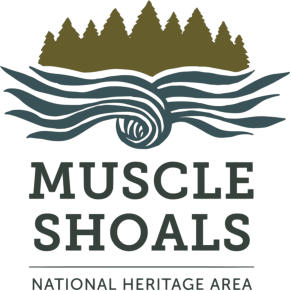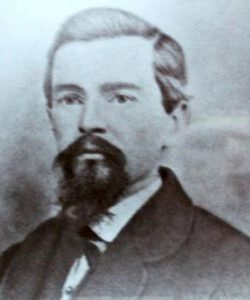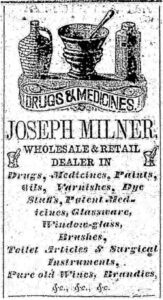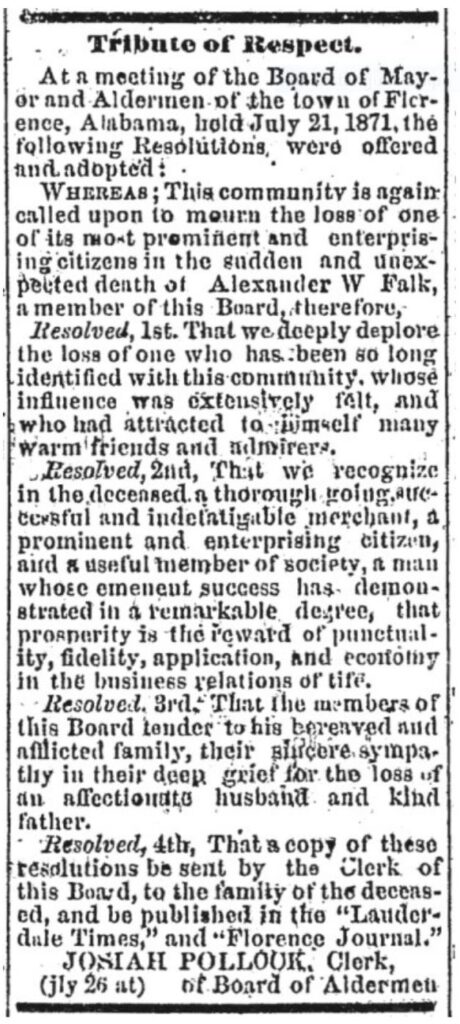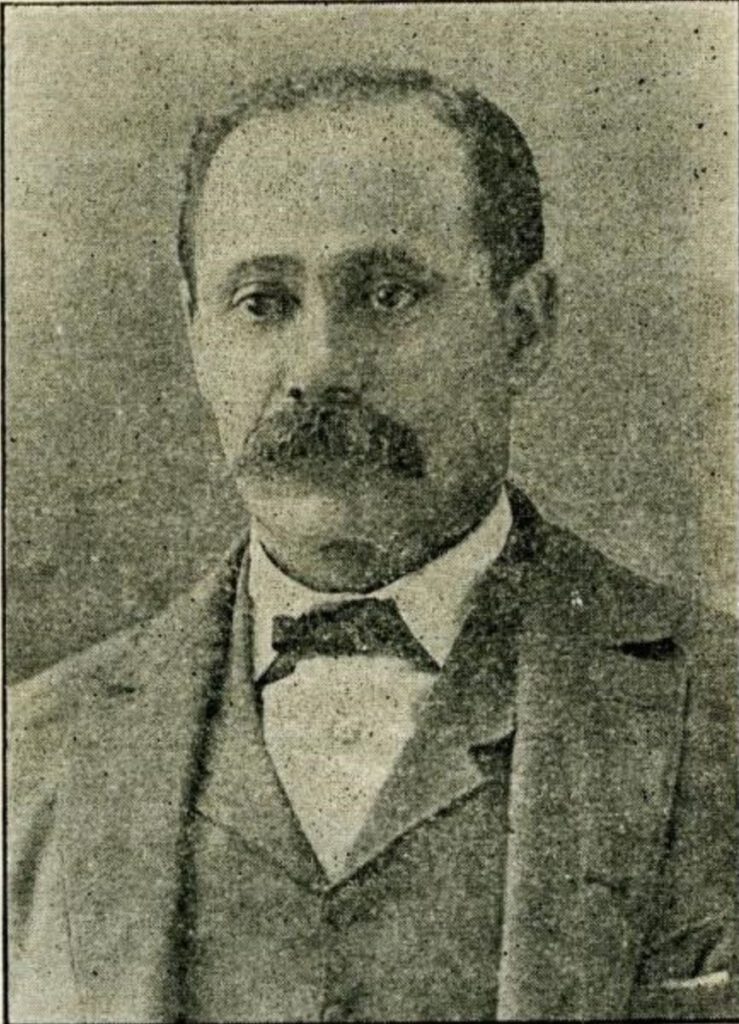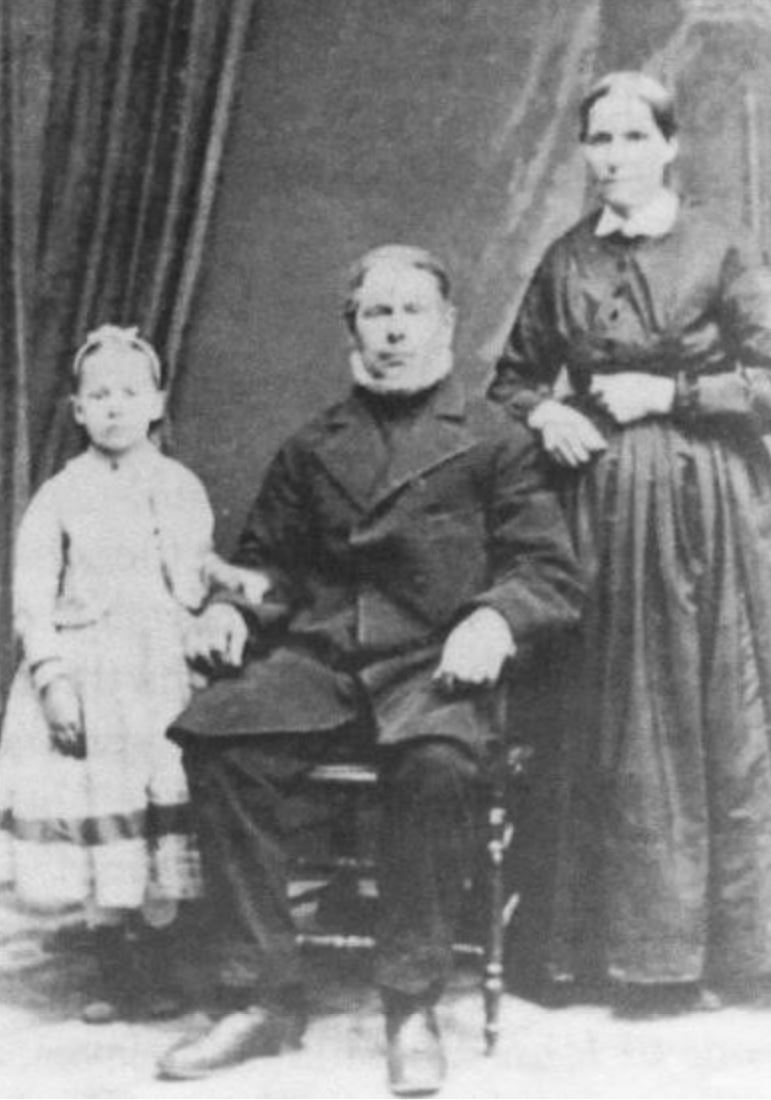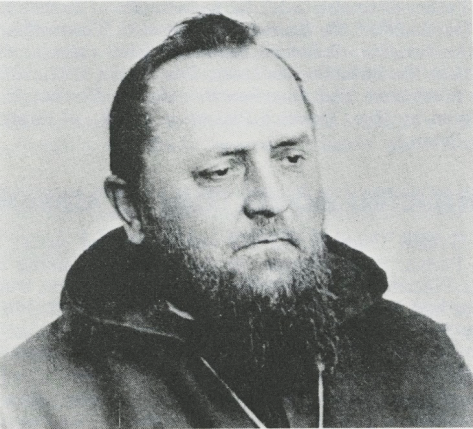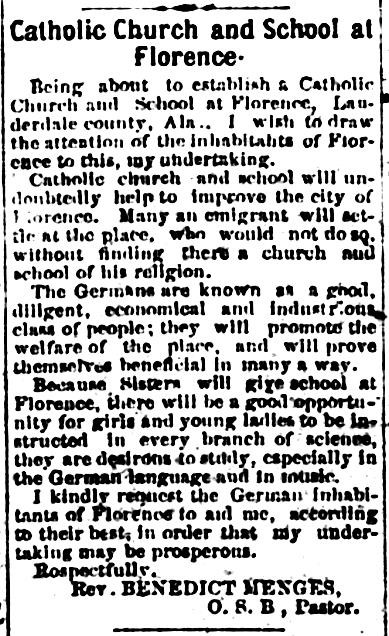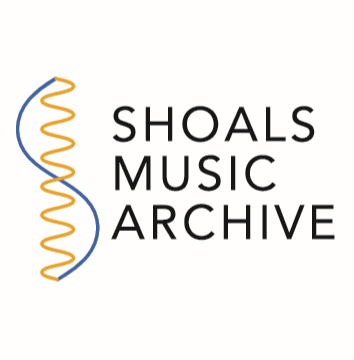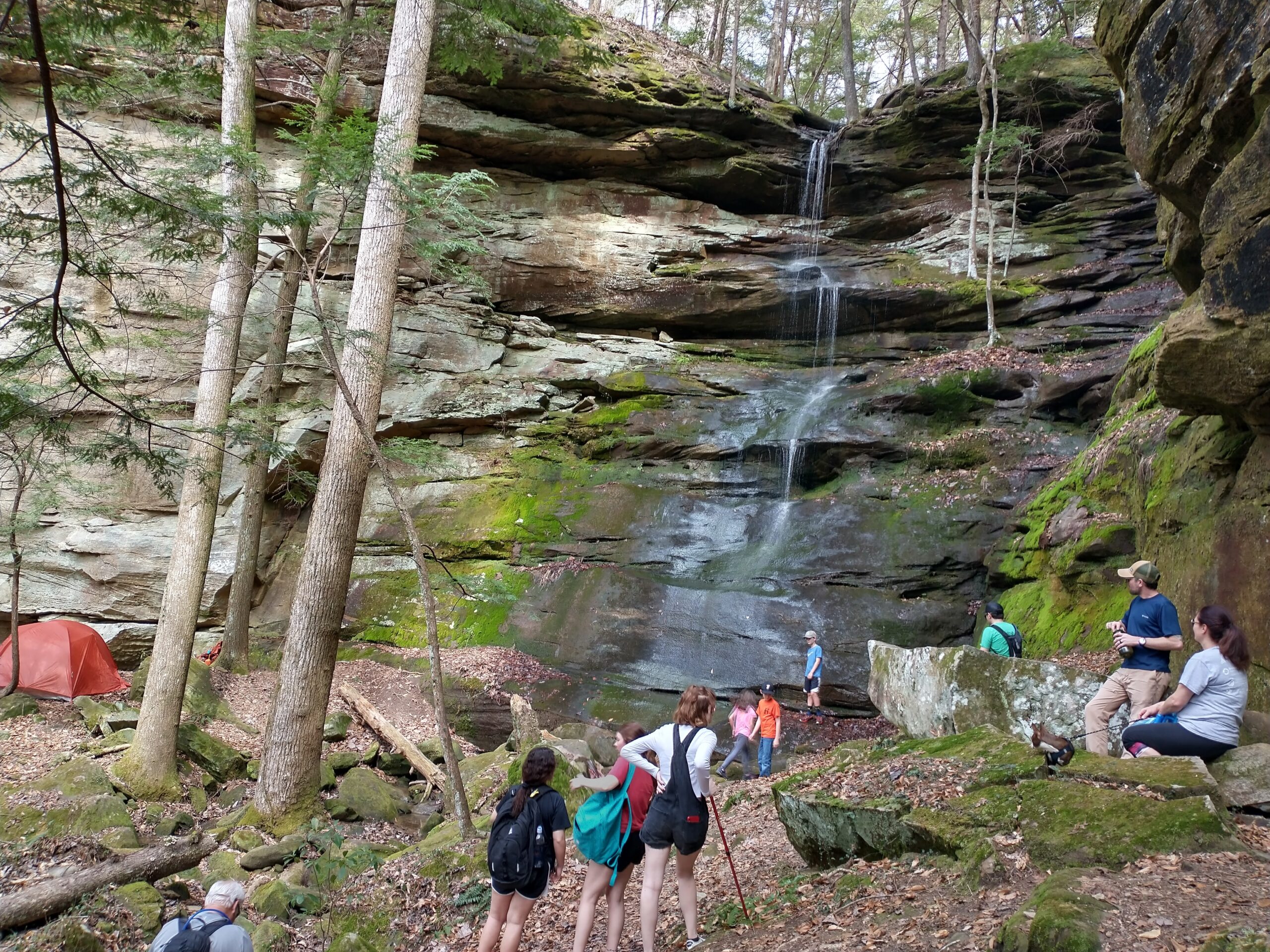By Lee Freeman
Florence-Lauderdale Public Library,
Local History-Genealogy Department
It’s easy nowadays to think of Florence as an international community, especially with the many international students who attend the University of North Alabama. But it might surprise you to know that almost from its beginning, Florence was an international community.
One of the first, if not the first, to note this phenomenon was nineteenth-century travel writer Anne Newport Royall (1769-1854). On her visit to Florence in July of 1821, she noted in a July 10 letter on July 10 to her friend and attorney Matt Dunbar that: “Florence is inhabited by people from almost all parts of Europe and the United States; here are English, Irish, Welch, Scotch, French, Dutch, Germans, and Grecians. The first Greek I ever saw was in this town . . . .” Royall went on to say that the man worked as a butcher and his wife had been an enslaved person.
By the 1820s, several Irish families settled in Florence-Lauderdale, including the James Jackson Sr. (1783-1840) and John Simpson (1790-1865) families. They were followed by other immigrants from the United Kingdom in the 1840s. The James Milner family came to Lauderdale from Leeds, in Yorkshire, in the north of England, in 1845. Son Joseph (1826-1894) established a drug store in Florence in 1854 upon his return from the California Gold Rush. Florence brick-mason Andrew Blair (1805-1861) immigrated from Glasgow, Scotland and, became a US citizen in 1844.
By the mid-1840s, Florence had a small community of German Jewish families. Alexander W. Falk (1812-1871), a native of Prussian Poland, was a partner in the dry-goods firm of Falk & Sands and the grocery firm of Rosenthal & Falk with Jacob Rosenthal. Falk (whose nephew Louis M. Falk founded the town of Falkville in 1854), died in July of 1871 and upon his death the mayor and board of aldermen of Florence published resolutions of respect in the Lauderdale Times. As there was no synagogue or rabbi in Florence, Dr. James W. Stewart, of the Methodist Church, read the Jewish burial service at the 1873 funeral of Falk’s widow Margaret.. By 1887, Florence’s Jewish community had grown to include several families of merchants. Among them was Russian immigrant and dry-goods store owner Morris Coplan (1856-1910), who in December, 1901, was elected to the city board of aldermen for ward No. 3. A member of several local fraternal orders, Coplan was also instrumental in founding Temple B’Nai Israel, the Tri-Cities’ synagogue, in 1906.
Florence-Lauderdale also included a Roman Catholic German community. Rev. Fr. John Henry Heuser, a Roman Catholic Priest of Fort Wayne, Indiana, and director of the Homestead Society of Cincinnati, founded St. Florian in 1871. The town was on the former John and Matthew Wilson plantations, about five miles northeast of Florence. It was named in honor of colonist Florian Rasch’s patron saint.
In 1878, German priest Fr. Benedict Menges OSB (1840-1904), a representative of the Benedictine Society of Westmoreland County, Pennsylvania, founded St. Joseph Catholic Church and School specifically for immigrants. Fr. Menges (a former priest of St. Michael’s at St. Florian and the first abbot of St. Bernard’s Abbey in Cullman) persuaded the Florence city fathers that a good Catholic church and school would help attract immigrants of the Catholic faith. The board of aldermen sold the Benedictines the old red brick schoolhouse on East College Street (the future location for the RM Patton School) for $1. Yet Florence had had Catholic settlers as early as 1820, when an estimated 200 Catholics lived in northwest Alabama. One of these was Tuscan engineer and surveyor Ferdinand Sannoner (1793-1859), who in 1818 with Madison County surveyor Hunter Peel surveyed Florence for the Cypress Land Co. Other Italians followed. Sicilian John Garibaldi (1855-1939) came to the US ca. 1888 and by 1891 had opened a boot and shoe-making shop that he operated in Florence (minus a brief hiatus operating a café) for almost 50 years. St. Florian’s German Catholics were followed by several families of Finnish immigrants who came to the Rawhide/Cloverdale area of Lauderdale in the 1880s. Some of the old homes of these families in Cloverdale still have the original Finnish-style saunas in their back yards.
By 1929 the Hungarian family of Bela Kess (ca. 1885-1931) had moved from Michigan to near Big Cut in Zip City and established a farm. Kess is remembered today by locals as “Billy Kiss.”

French immigrant and civil engineer Louis Henry Gass immigrated to America from Alsace in 1869. He worked for the Florence Land, Mining & Manufacturing Co. and the Sheffield Coal & Iron Co.
Florence even had at least one French immigrant. Civil engineer Louis Henry Gass (ca.1866-1957) was born in Birschvilliers, Alsace, France (then a German province). His family immigrated to America in 1869 and by 1910 Louis (a civil engineer) and his family were living in Florence on Pine Street.
Anthony Reogas (1844-1923), a native of Mexico, was a resident at Oakland between 1880 and 1900. In the 1950s, his son Joe Reogas was known by Florentines for his hot tamales.
Asian immigrants, too, called Florence home in the nineteenth century. In the 1890s, Charlie George (his Chinese name was said to have been “Chang Fou”) opened a laundry on Tennessee Street. In May of 1890, George was joined by his 18-year-old cousin, Jones Fon.
There seems to have been little friction between these various ethnic groups. Florentines of whatever ethnic background apparently found ways to coexist peacefully.*
These individuals and ethnic groups made important contributions to the history of Florence-Lauderdale and helped make us an international community. ###
* MSNHA note: Until the end of the Civil War, in 1865, northwest Alabama also included enslaved Africans and their descendants who were considered to be private property and were not counted as immigrants — or even as people. This Library of Congress essay discusses their legal status and the African culture & skills they brought to America. To learn more about African American history in Colbert & Lauderdale counties, visit Shoals Black History, a digital-archive initiative sponsored by Project Say Something, Florence-Lauderdale Public Library & MSNHA.
Florence native Lee Freeman has been the local historian-genealogist at the Florence-Lauderdale Public Library since 1997. The author of one book & several articles, he serves on local historical & historical preservation boards.
